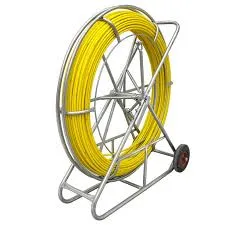
-
 Afrikaans
Afrikaans -
 Albanian
Albanian -
 Amharic
Amharic -
 Arabic
Arabic -
 Armenian
Armenian -
 Azerbaijani
Azerbaijani -
 Basque
Basque -
 Belarusian
Belarusian -
 Bengali
Bengali -
 Bosnian
Bosnian -
 Bulgarian
Bulgarian -
 Catalan
Catalan -
 Cebuano
Cebuano -
 Corsican
Corsican -
 Croatian
Croatian -
 Czech
Czech -
 Danish
Danish -
 Dutch
Dutch -
 English
English -
 Esperanto
Esperanto -
 Estonian
Estonian -
 Finnish
Finnish -
 French
French -
 Frisian
Frisian -
 Galician
Galician -
 Georgian
Georgian -
 German
German -
 Greek
Greek -
 Gujarati
Gujarati -
 Haitian Creole
Haitian Creole -
 hausa
hausa -
 hawaiian
hawaiian -
 Hebrew
Hebrew -
 Hindi
Hindi -
 Miao
Miao -
 Hungarian
Hungarian -
 Icelandic
Icelandic -
 igbo
igbo -
 Indonesian
Indonesian -
 irish
irish -
 Italian
Italian -
 Japanese
Japanese -
 Javanese
Javanese -
 Kannada
Kannada -
 kazakh
kazakh -
 Khmer
Khmer -
 Rwandese
Rwandese -
 Korean
Korean -
 Kurdish
Kurdish -
 Kyrgyz
Kyrgyz -
 Lao
Lao -
 Latin
Latin -
 Latvian
Latvian -
 Lithuanian
Lithuanian -
 Luxembourgish
Luxembourgish -
 Macedonian
Macedonian -
 Malgashi
Malgashi -
 Malay
Malay -
 Malayalam
Malayalam -
 Maltese
Maltese -
 Maori
Maori -
 Marathi
Marathi -
 Mongolian
Mongolian -
 Myanmar
Myanmar -
 Nepali
Nepali -
 Norwegian
Norwegian -
 Norwegian
Norwegian -
 Occitan
Occitan -
 Pashto
Pashto -
 Persian
Persian -
 Polish
Polish -
 Portuguese
Portuguese -
 Punjabi
Punjabi -
 Romanian
Romanian -
 Russian
Russian -
 Samoan
Samoan -
 Scottish Gaelic
Scottish Gaelic -
 Serbian
Serbian -
 Sesotho
Sesotho -
 Shona
Shona -
 Sindhi
Sindhi -
 Sinhala
Sinhala -
 Slovak
Slovak -
 Slovenian
Slovenian -
 Somali
Somali -
 Spanish
Spanish -
 Sundanese
Sundanese -
 Swahili
Swahili -
 Swedish
Swedish -
 Tagalog
Tagalog -
 Tajik
Tajik -
 Tamil
Tamil -
 Tatar
Tatar -
 Telugu
Telugu -
 Thai
Thai -
 Turkish
Turkish -
 Turkmen
Turkmen -
 Ukrainian
Ukrainian -
 Urdu
Urdu -
 Uighur
Uighur -
 Uzbek
Uzbek -
 Vietnamese
Vietnamese -
 Welsh
Welsh -
 Bantu
Bantu -
 Yiddish
Yiddish -
 Yoruba
Yoruba -
 Zulu
Zulu


Dec . 07, 2024 13:27 Back to list
copper pipe hydraulic crimping tool
The Essential Guide to Copper Pipe Hydraulic Crimping Tools
In the realm of plumbing and HVAC installations, efficiency and reliability are paramount. When working with copper pipes, one of the most crucial tasks is ensuring secure connections that withstand the pressures of water or gas flow. This is where copper pipe hydraulic crimping tools come into play. These specialized tools are designed to create durable and leak-free joints, making them indispensable for professionals in these fields.
Understanding Hydraulic Crimping Tools
Hydraulic crimping tools utilize hydraulic pressure to compress a fitting onto a pipe, thereby creating a strong bond. Unlike traditional methods, such as soldering or brazing, crimping does not require heat. This not only eliminates potential hazards associated with open flames but also significantly reduces installation time. The ability to create joints quickly and safely is a key advantage that crimping tools offer.
Advantages of Using Hydraulic Crimping Tools
1. Efficiency Hydraulic crimping tools can complete a connection in a fraction of the time it would take to solder or weld. This is particularly beneficial for large-scale projects or when working in tight spaces where accessibility is limited.
2. Consistency The hydraulic mechanism ensures that every crimp is uniform, resulting in reliable connections that meet industry standards. In contrast, manual methods can lead to inconsistencies that may cause leaks or failures over time.
3. No Need for Flame With the elimination of heat, crimping reduces the risks associated with fire hazards, particularly in situations where flammable materials are present. This feature makes crimping a safer choice for many applications.
4. Versatility Hydraulic crimping tools can be used with various sizes and types of fittings, making them adaptable for different projects. This versatility allows professionals to handle a wide range of jobs without needing multiple tools.
Choosing the Right Hydraulic Crimping Tool
When selecting a copper pipe hydraulic crimping tool, several factors should be considered
copper pipe hydraulic crimping tool

- Size Range Ensure the tool is capable of crimping the specific sizes of copper pipes you work with. Many tools offer a variety of die sets to accommodate different diameters.
- Hydraulic Power Assess the hydraulic force the tool can deliver. Higher pressure usually means more effective crimping, especially for larger diameter pipes.
- Portability Some hydraulic crimping tools are designed to be compact and easy to transport, which is an advantage for mobile professionals.
- Ease of Use Look for ergonomic designs that enhance comfort during long periods of use. Features such as a quick-release mechanism can also improve efficiency.
Maintenance and Care
To ensure longevity and optimal performance of your hydraulic crimping tool, it is essential to follow a regular maintenance routine
- Clean After Use Debris and metal shavings can accumulate during crimping. Cleaning the tool after each use prevents wear and tear.
- Inspect for Damage Regularly check the tool for any signs of damage or wear, particularly to the hydraulic mechanism and crimping dies.
- Lubricate Moving Parts Keeping moving parts lubricated will enhance the performance of the tool and prevent issues like sticking or jamming.
Conclusion
Copper pipe hydraulic crimping tools are an essential component in modern plumbing and HVAC work. Their ability to create strong, reliable connections quickly and safely sets them apart from traditional methods. As technology continues to advance, the functionality and efficiency of these tools will only improve, making them a valuable investment for professionals in the industry. Whether you are a seasoned plumber or an HVAC technician, incorporating hydraulic crimping tools into your workflow will undoubtedly enhance your productivity and the quality of your work.
Latest news
What Are Construction Tools and How Are They Used?
NewsJul.11,2025
Professional-Grade Duct Rodding Tools for Superior Cable Installation
NewsJul.11,2025
Enhancing Safety and Efficiency with Modern Hot Stick Solutions
NewsJul.11,2025
Empowering Cable Installation with Advanced Rodder Solutions
NewsJul.11,2025
Elevate Your Cable Installation Projects with Cable Pulling Tools
NewsJul.11,2025
Efficient Cable Handling Solutions: Cable Rollers for Sale
NewsJul.11,2025











